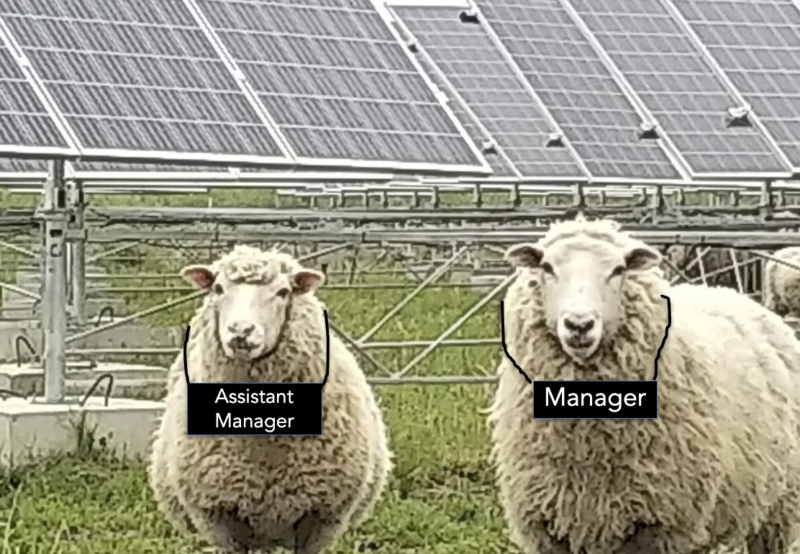What on Earth is Agrivoltaics!?
Feb 28, 2023
Food and energy are two of the most valuable resources we have on Earth. At this point in human history, we can’t really have one without the other. Now, the emerging field of Agrivoltaics is trying to harness that interdependency into abundance.
Agrivoltaics refers to the hot new trend sweeping farms across the planet. It is the practice of growing crops and grazing livestock on the same land as ground-mounted solar panels.
Ontario’s Greenbelt Act has historically restricted the installation of ground-mounted solar panels on much of the province’s prime farmland, resulting in most systems being built on non-arable land. This is of course to protect the finite land we need to produce food for a growing population.
According to this line of thinking, there are other ways to get our energy – hydro, gas, oil, and of course rooftop solar – so why would we take up this valuable land with solar panels? Well, research and experience shows that the benefits of growing certain crops and raising livestock and bees alongside solar energy systems are nothing to scoff at.
 Livestock
Livestock
Livestock including sheep and goats are a great entry point to Agrivoltaics.
SolarShare, in fact, has sheep on staff at our Sundance and Wintergreen sites, grazing and keeping vegetation under control. We contract them from local farmers as a mowing service, which maintains the fields at a lower cost and reduces our emissions by about four tonnes of CO2e per year.
This also provides income for the farmer and feeds the sheep, who, in turn, can be used for meat, wool and dairy. There is even some evidence that this practice could have animal welfare benefits and even increase wool quality and quantity!
Beekeeping
Another great entry point to Agrivoltaics is beekeeping. The world needs honey bees and other pollinators – not only do they make delicious honey, but they help make our food grow.
Pollinator plants such as Milkweed, Bergamot and Black Eyed Susans can grow alongside both solar panels and beehives. There are varieties of pollinator plants that can grow in pretty much any kind of soil – Milkweed is a great example.
This is convenient for beekeeping, because honey bees feed on pollinator plants. This also creates an additional source of income from bee products. And perhaps best of all, other at-risk pollinators such as bumble bees and monarch butterflies can also feed on these plants and continue to perform their very necessary role in the ecosystem.
Crops
Growing crops next to solar systems on arable land can be controversial and there are restrictions against it in many jurisdictions. But research and case studies from all over the world have proved that this is an endeavour worth exploring.
Research published in 2022 from Western University shows that in Canada, when grown alongside solar systems, crops including sweet corn, winter wheat, and especially peppers, can actually increase production and profit.
There is also evidence that the crops grown alongside solar panels help keep the ground moist – requiring less irrigation – and keep the panels cooler, allowing for higher productivity.
Not to mention, in Ontario where farmers are experiencing high levels of stress, much of which is due to finances, solar panels can provide additional income.
In Conclusion
As Ontario’s population grows, the demand for food and energy grow with it. It may be time to rethink attitudes and regulations about large-scale solar alongside agriculture on farmland as evidence of the benefits of Agrivoltaics and the need for innovative solutions grows.
